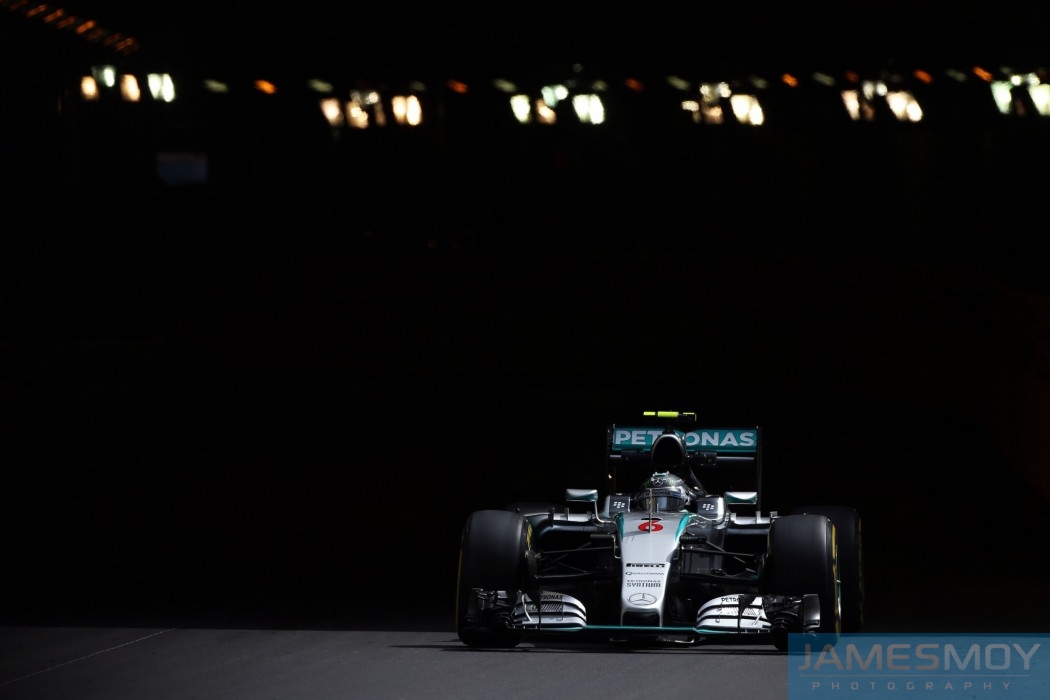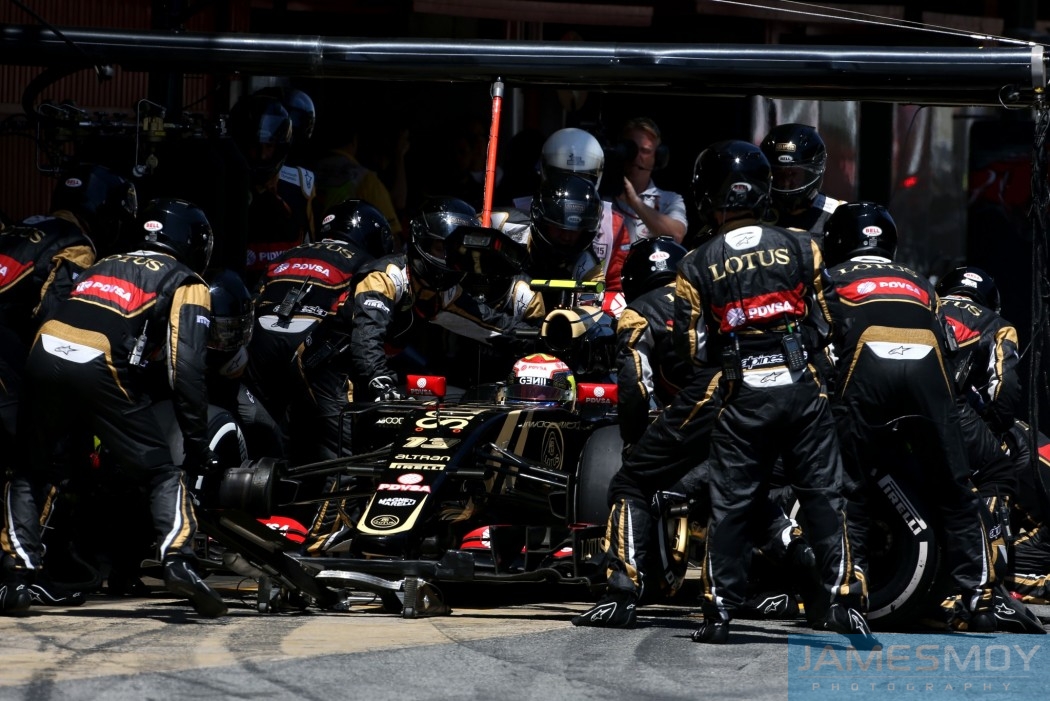I can’t recall a time when there was more criticism of Formula 1 than there is now. Everyone I speak to seems to have their own opinion of what’s going wrong, but only a handful of people seem able to come up with constructive and practical suggestions as to how to solve the problems. So are we brave enough for a new approach?
Mistakes
A lot of the criticism is being made without too much reference to actual facts, particularly where declining TV viewing figures and spectator attendances are concerned. However, it doesn’t take a statistician to recognise that support for the sport is definitely on the wane, despite the sterling efforts of many motorsport journalists whose jobs rely on it and quite frankly, would still find it exciting if only 5 cars lined up on the starting grid.
I’ve followed F1 since the mid-1960s and watched it hit as many low spots as it has produced unforgettable moments of drama and excitement. It’s only in 2015, however, that I’ve reached the stage where I no longer plan my diary around the Grand Prix calendar. I’ll always record it and fast forward my way through, but that burning desire to witness every minute of action has gone. On the other hand, I try very hard not to miss a MotoGP event. I should stress that I’m not an aging biker, but I do enjoy sitting on the edge of my chair, heart often in my mouth, watching the extraordinary track action that is served up on a regular basis out by the likes of Lorenzo, Marques, Rossi, Pedrosa and others! When did I last experience that same nervous feeling watching Formula 1? Seriously, I can’t remember.
When Moses came down from the mountain with his tablet of commandments, I don’t seem to recall that there was one stipulating that Formula 1 had to be run by the designers and technologists.
What worries me is that the corporate world also appears to be losing its fascination with this sport, judging by the blatant lack of major sponsorship appearing on the Formula 1 cars. In that respect, I must say that the 2015 cars are the blandest collection of race cars from a livery aspect that I can remember. Can you spot a McLaren from a Mercedes or a Force India in an instant? Turn your TV channel to IndyCar racing and you’ll see the difference. Imaginative, creative colour schemes light up the screen. Has the word entertainment been lost from the Formula 1 dictionary? I don’t see many other sports being shown in black and white, which is how it’s beginning to look! How difficult is it to bring in some young hotshot graphic designers to spice up the show a bit?
Then there are the wings! If we want to see wings travelling at high speed we can jump on a train to Heathrow! We don’t need to pay in excess of a hundred quid to go to a race track and watch these ridiculous looking monstrosities perched on the front end of Grand Prix cars. Judging by the comments made at every TV race, they seem to have one role in life – to give the drivers a reason for not overtaking. Ban the wretched things in their current format and return to simplistic wings that don’t fall to bits at the lightest contact with a rear wheel and perhaps allow us to watch overtaking of the sort typified by Mansell, Prost and Senna.
Can you imagine a game of cricket, where the bats would be designed by Formula 1’s technical personnel? They’d be as wide as the stumps to guarantee that no ball would get past and aerodynamically efficient to allow sixes off every ball. But would it make for exciting cricket? No, and yet we allow technology to ruin the sport factor in Formula 1. I’m not knocking the designers. If anything, I’m saying that they’re TOO good. The blame for the current scenario is not with them. It lies fairly and squarely with the rule-makers of the spectacle.
Then we come to the tracks. Drivers like fast sweeping corners with massive run-off areas. The modern circuits deliver that in abundance. The problem is that they don’t make for plenty of overtaking in Formula 1 and that’s what the public wants to see – overtaking opportunities! Basically, that’s why MotoGP works and Formula 1 doesn’t. It’s all about overtaking, where bikes and riders are on the very limit, not just relying on DRS to add a vital miles-per-hour advantage.
The sport factor
Don’t take this the wrong way – no one wants to see drivers hurt, but if they continue to demand the obscene sums that are currently being demanded and paid, they need to recognise that the show needs to be improved. To put it bluntly, the level of difficulty of racing an F1 car needs to be increased dramatically. If so many fresh-faced youngsters from F3 or similar can get in a current Formula 1 car and immediately be on the pace with established world champions, it sends out one of two messages. Either the top drivers who are demanding obscene levels of payment are conning the Formula 1 fans as to the difficulty of racing a car like this, or else the cars are now far too easy to drive. My guess is that it’s the latter. That’s down once again to the rule-makers. When Moses came down from the mountain with his tablet of commandments, I don’t seem to recall that there was one stipulating that Formula 1 had to be run by the designers and technologists.
Just watch the cars at the next GP come into the pit lane at the end of a supposed “tough” race and look at how fresh all the drivers appear. Can you recall when Keke Rosberg, Nigel Mansell, Derek Warwick and their counterparts raced in Formula 1? You could see the physical demands that it made on them and before you say that they weren’t as fit as todays drivers, don’t kid yourselves… you’d be missing the point.
The list of problems goes on but so far none of them are beyond a solution. Tyres are throwing off too much rubber and creating pathways between the marbles that have to be followed if a car isn’t to lose traction, an easy observation to make if you watch Formula 1 carefully. Do you see rubber like that during the bike Grands Prix? Hardly, so why do we all talk about how difficult it is to race closely because of the rubber debris and yet do nothing to stop this happening? You tell me, really.
Then we come to the drivers. Can the powerbrokers of Formula 1 put hand on heart and assure the paying public and the business world that this sport is all about the top 20 racing drivers in the world competing in cars that are way beyond what should be possible to drive, on tracks that bring out the very best in them?
The new way
So what’s the answer? For a start, I believe that it’s time we introduced a radical approach to selecting who can drive in the Formula 1 World Championship. The pinnacle of motorsport needs to comprise the best drivers.
There should be a system whereby drivers earn the right to race in Formula 1. If you think about it, it’s what most other sports do. In the process, full responsibility for securing sponsorship needs to return to the teams and not the drivers. Eligibility to compete in F1 needs to be based on performance levels, not financial standards.
What I’m proposing would demand a drastic change, as drastic as 1-day cricket was considered when it was launched. It’s an annual F1 Driver Qualification event, to be held every December in either Bahrain or Abu Dhabi.
The costs would be met by FOM out of the TV Rights Fees and commercial revenues that could surely be derived from this new, innovative motorsport event.
How would it work? A new format would be introduced whereby at the end of each F1 season only the top 10 point-scoring drivers automatically qualify to race in F1 the following season. The remaining 12/14 F1 seats would be filled through the new high-profile qualifying event. It would include those drivers who finished outside the top ten places in the F1 Drivers Championship, as well as leading GP2 drivers.
Under the new format, drivers would sign up to an F1 GP Team for one year, with an option to continue only if they qualify for a Formula 1 entry, either by finishing in the top ten of the F1 Championship, or through the qualification event.
This would mean that the only “pay-drivers” would be those who also had the talent to secure a place through the qualifiers.
The December Qualification event would comprise 3 races over one weekend and I’m sure that would be a must-have TV option for broadcasters. The top 8 drivers in the GP2 Championship would be invited to race, as would those Formula 1 drivers who failed to automatically qualify for the new season. The organisers would have the option to include 4 Wild-Card drivers.
The cars would be GP2 cars, owned and prepared by FOM-contracted personnel (from existing GP2 teams at the end of their season) to an identical standard. By having three point-scoring races, each counting towards a driver’s total, all competitors would have a fair chance of displaying their talent. The top 14 drivers overall would qualify to drive in the Formula 1 Championship the next season and would subsequently negotiate their drives with the teams. The onus on securing sponsorship would then be on each team and not the drivers.
This would mean that the only “pay-drivers” would be those who also had the talent to secure a place through the qualifiers.
In addition to this drastic change, there needs to be a panel of Formula 1 rule-makers from across a range of motorsport and business disciplines, all of whom understand the meaning of the words “sports entertainment”. Their task would be to ensure that technology is kept in its place, albeit a highly valued place, and not allowed to detract from the entertainment value of Formula 1.
This is just the bare bone of the proposal, but it should make for some interesting discussion.
I can already hear the screams and shouts from those saying it would never work! They would be similar to those from “experts” who rejected one day-cricket, as I’ve mentioned before.
I’m prepared to be deafened by the howls of derision that I, a mere sponsorship acquisition exponent, should have the temerity to suggest that radical change is needed and instead of just criticising the current situation, have come up with a possible fresh approach. It may be way off the mark, but if it sparks some new thoughts on the subject, that won’t be a bad thing.
Or maybe the earth is flat after all…












Related Articles